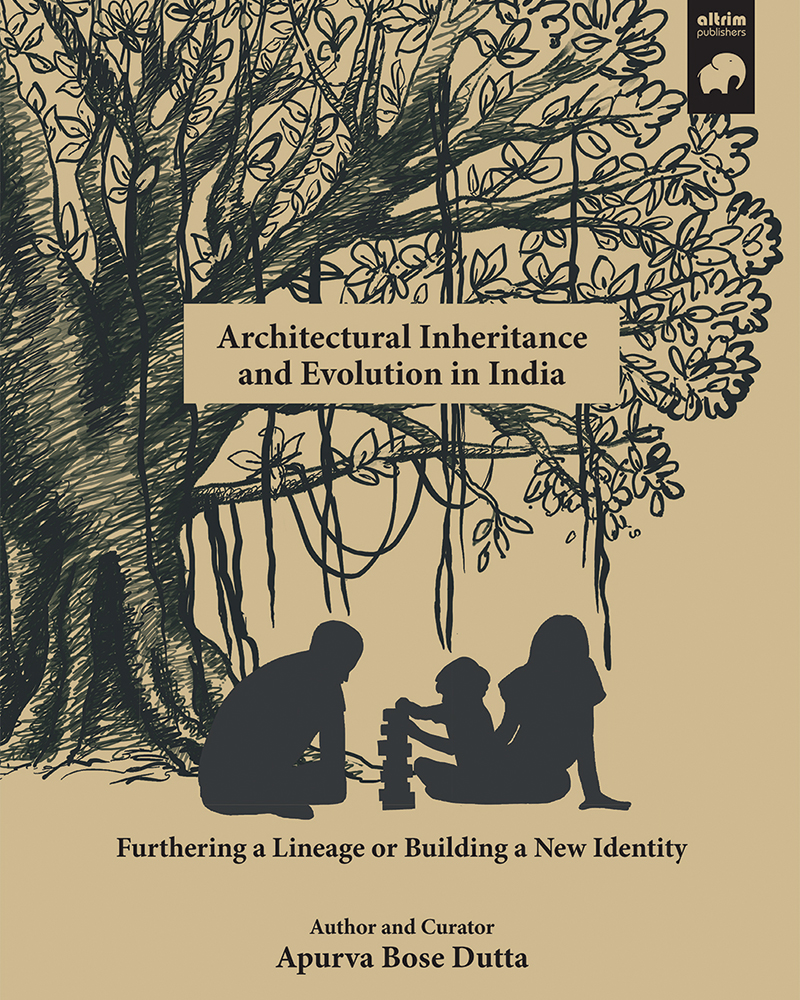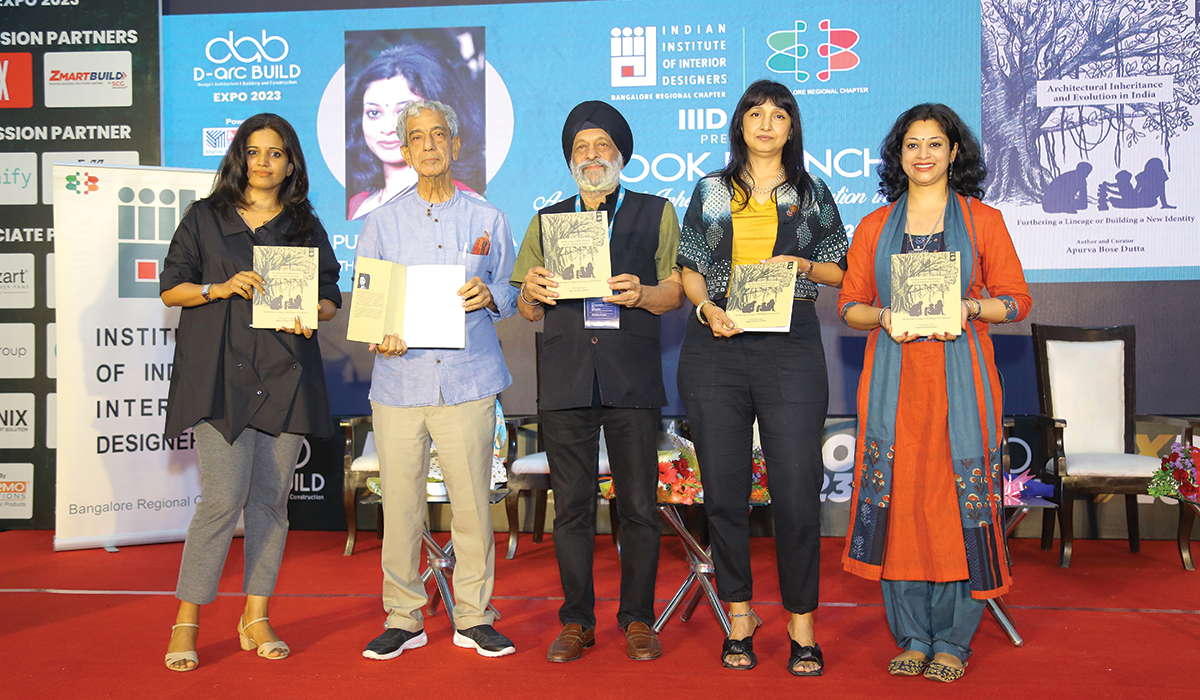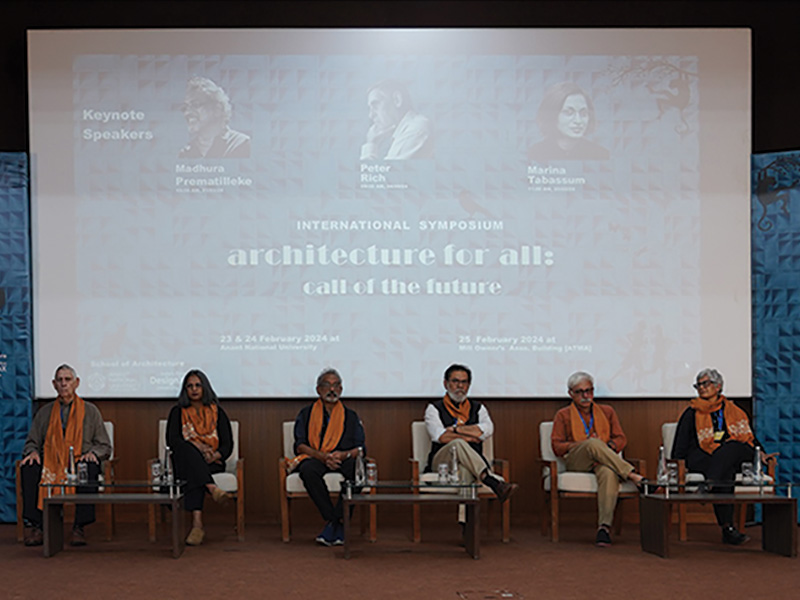What is the book Architectural Inheritance and Evolution in India about?
 Cover Concept: Apurva Bose Dutta, Cover Illustration: Shikha Garg, Publisher: Altrim Publishers
Cover Concept: Apurva Bose Dutta, Cover Illustration: Shikha Garg, Publisher: Altrim PublishersThe families featured belong to diverse geographies and have different modes of work set-ups: families sharing a practice across generations, families having multiple architectural practices, and families where members work outside the family practice and in allied fields of architecture.
The book also focuses on different architectural dynamics in the family, impacted by their professional and personal attributes. The families featured are: Uttam C. Jain & Family, Sanjay Puri & Family, Shahs & Gores, and Habeeb Khan & Family (from Maharashtra); Kembhavis (Karnataka), Zacharias (Kerala & Karnataka), S.D. Sharma & Family (Chandigarh); Sumit Ghosh & Family, Shahs & Khannas, and Kanvindes (Delhi NCR).
An introductory chapter and an epilogue draw parallels and comparisons between the families and their circumstances.
What was your inspiration for writing the book?
The book concentrates on three aspects: family, architecture, and India, all of which were my inspirations to explore a topic that hasn’t yet been researched in detail in the architectural and family culture of India. Architecture doesn’t remain a 9 to 5 job but seeps into an architect’s lifestyle and becomes the lens through which they perceive life.
It is intriguing to realise how a creative and subjective field like architecture with diverse interpretations and approaches becomes a professional anchor for families in India, which are immersed in tradition, cultural, and social constructs.
The book, besides traversing the families’ individual and collective philosophies and contributions, delves into the synergy, agreements, disagreements, and collaborations that architecture can create within families. The book exemplifies why architecture in India needs to be indebted to all the architectural families in India for their remarkable contribution to architecture.
What did the process of writing the book involve?
I took a multi-pronged approach, beginning with intensive research on all the architects and their families. The research translated into a framework for a discussion with the families, which was then contextualised as per the family members’ professional journey. I had online conversations that spanned 2.5-3 hours with every family. Interacting with the members of a family together was crucial because their emotions, reactions and synergies would be at their peak when they came together. The research and information collected was painstakingly transcribed and subsequently formalized into essays.
 Book launch by Prof. Krishnarao Jaisim, Prof. Charanjit Shah, Ar. Nita Kembhavi, Ar. Kavita Sastry, and Ar. Apurva Bose Dutta (extreme right) at D-arc BUILD EXPO 2023 in Bengaluru. (Picture courtesy: Zion Exhibitions)
Book launch by Prof. Krishnarao Jaisim, Prof. Charanjit Shah, Ar. Nita Kembhavi, Ar. Kavita Sastry, and Ar. Apurva Bose Dutta (extreme right) at D-arc BUILD EXPO 2023 in Bengaluru. (Picture courtesy: Zion Exhibitions)What kind of challenges did you face while writing this book?
Requesting 44 architects and 10 architectural families to take some good time out for the book was the first challenge. Secondly, I had to conduct intensive research over their 6-7 decades of work and professional journey, and I wanted to ensure that every architect would get a fair share of space in the book.
Thirdly, since familial ties (both personal and professional) is a sensitive topic, I had to ensure that the conversations were correctly interpreted, and the direct and implicit takeaways were well comprehended. I hand-wrote at least 25-35 pages of every conversation and transcribing them was exhausting work.
I have included only trained architects, and not designers, in the book because the discipline of design encapsulates various design sub-heads, which would have made streamlining the conversations impossible. In a few families, some of the family members were either artists or interior/product designers, and I had to make the families understand why they (though mentioned in the book) were not a part of the essay.
Assuming the dual role of a curator, I was also wholly involved in all the other aspects - from coordinating with the architects and their offices, in the selection and curation of the images, to overseeing page layouts to conceptualising the cover of the book. My 18 years of engaging with the architectural media have given me good exposure to publications, and I was keen on using my understanding in the best possible manner.
What are your forthcoming engagements?
Writing is symbolic of a thought process and impacts architecture in diverse ways. Writing and curation have allowed me to engage through various communication channels. I am currently editing an international journal on Writing and Literature; the project is exciting because I believe that the discussion of alignment of writing with architecture needs global platforms.
I am also involved in many training initiatives in architectural writing in various mediums. Curating and conducting discourses on platforms aligned with architecture, design, and building is also close to my heart and I look forward to doing them more intensely.
About the author
Bengaluru-based author, award-winning architectural journalist, curator, editor, and educator Ar. Apurva Bose Dutta works at the intersection of architectural design writing, thinking, discourse, curation, journalism, criticism, and communications. Her 18-year experience in the AEC industry has brought her global collaborations with prominent multimedia publishing houses, and with firms, organisations, and institutions affiliated with architecture, design, and building. Recognised for her pioneering work in architectural writing in India, Apurva is widely published and holds advisory positions with several renowned architectural and design global platforms. She is also author of ‘Architectural Voices of India’ (2017).
For more information and to buy your copy please visit: https://www.apurvabose.com/book-architectural-inheritance-and-evolution-in-india/. The book is supported by Council of Architecture of India.















